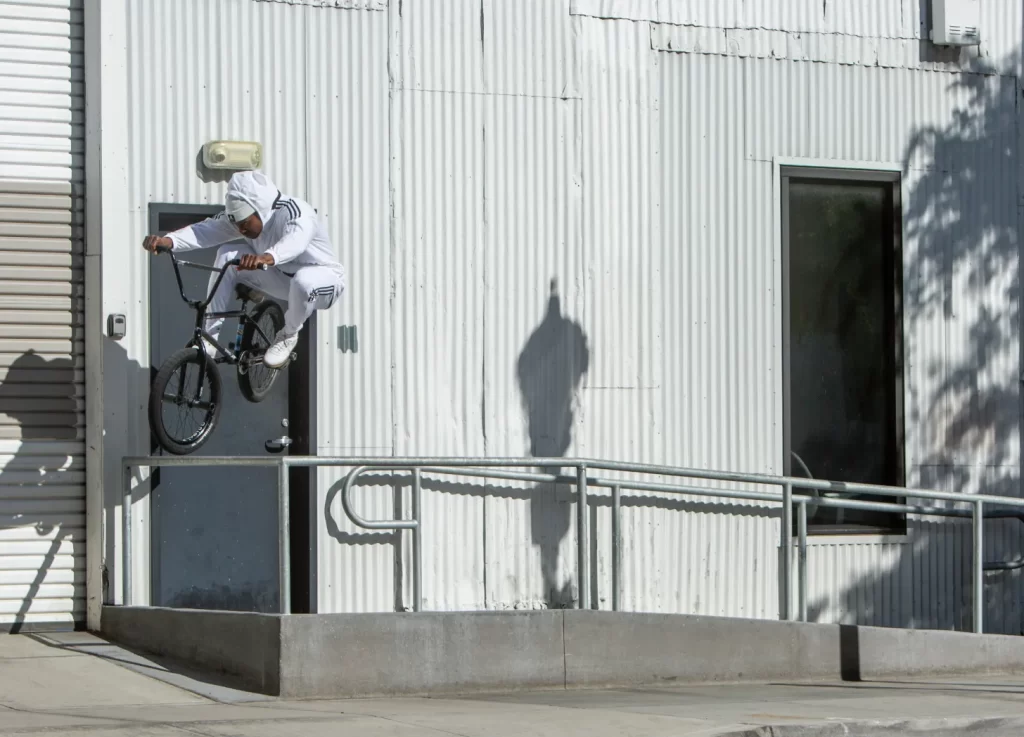Take The *Sigh* Out Of Your Next Insights Report

More than thirty hours of transcribing and a billion Post-it Notes later, our latest Research and Insights project for adidas Five Ten was as mammoth as it was revealing…
Prepare to hate the sound of your own voice.
At hour eighteen of transcribing, you’ll begin to believe you have the same perma-flu vocal tone as Zippy from Rainbow. By hour thirty, you’ll be wondering how the rest of your life will play out under a new vow of silence.
These are just two of the inevitabilities you’ll encounter when taking on a huge trends and insights research report. Others include: losing your computer keyboard under a carpet of Post-it Notes, and letting approximately four cups of tea go cold a day.
Did we experience all of these during our latest R&I report for adidas Five Ten? Absolutely! Was it worth it? It really, really was, not only for the unique results we proudly unearthed, but for the high praise we received on its (WeTransfer-bursting) delivery.
We set out to find concrete links between the hyper niche and tight-knit BMX and mountain bike communities, and collate a set of insights that could present new product marketing opportunities for the brand. Speaking to key authorities, amateur riders, and covershot pros – sourced through our unrivalled action sports network – sent us in some unexpected and unexplored directions, and assisted us in landing on overlooked yet crucial links that can now cornerstone the brand’s future strategies.
Wondering how we did it? Thank goodness, because this list of tips for starting – and ultimately nailing – your next slab of R&I work in niche topics isn’t going to read itself…

1. SPEAK TO THE COMMUNITY
Er, yeah, an obvious place to start. But listen up: asking search engines to find existing trends and data in niche industries is going to be as productive as asking your elderly neighbour. Google can’t help you here, friend, as nobody’s found them yet. In our case, we started the oh-so-tough task of reading through BMX threads, articles, and magazines to form and find some useful context and insights, knowing it would never give us the real community problems our report needed. The most effective way to understand our subjects was to get talking. We arranged interviews with BMXers from different disciplines and levels, from beginner street riders to pro park and racing athletes, opting for a one-to-one approach rather than roundtables.
It would have been a lot quicker and a lot easier to set up group sessions, killing plenty of birds with just a couple of stones. But we felt that speaking one-on-one would earn us richer and more personal insights, and the huge variety of BMX abilities and disciplines we were working with could have led to lost voices in a group setting. These in-person and virtual interviews quickly became one of our most crucial data sources, with each meeting a safe space for individuals to open up and voice their honest opinions – a factor that’s even more important in niche sports, where communities are rarely given a platform to be heard.
“The phrase ‘Yeah? Tell me more’ should be used at least once in every one of your interviews.”
Mark Rosenberg, Head of Creative and Strategy
2. LEARN FROM EXPERTS IN THE INDUSTRY
Unsurprisingly, ACM’s contacts book is bursting with big names from the action sports industry, and it takes a beating when we’re conducting major research. Either the name we’re after is already there, or another name knows how to get them for us. In this instance, it helped us set up interviews with not just riders, but BMX experts too, so we could get their informed views on the challenges the sport is facing, some historical context, as well as broader opinions on products within the sector. It’s a deep and impassioned knowledge that you’ll never get from your Google trawling.
3. WORK WITH AN INSIGHTS PROVIDER TO VALIDATE YOUR FINDINGS
Everyone strives for validation these days, and when it comes to research and trends in a sport that has only a few true experts, we’re no different. It’s why we turned to data provider Fortune Business Insights to validate our findings in sales, market value, and emerging trends, and create a bespoke report that proved our work to be absolutely bang-on accurate.

4. FIND A COLLABORATION PLATFORM THAT WORKS
Reached the end of your Post-it Note supply? Get a load of Miro. The online brainstorming platform has research templates that get the thumbs up from our most visual learners. It’s great for work at ACM as it’s geared up for remote collaborations. Predominantly, we used it to create digital sticky notes to get a wide-angle view of everything in a snapshot, which we found very helpful for pulling together our themes. If it’s your first time using Miro, start in their template library. It has some great tools for sparking creativity, and helping with your strategy and planning frameworks.
5. DON’T BE AFRAID TO GO OFF-SCRIPT
Okay, if there’s one thing you remember from this list, let it be this. Like any research and insights project, we had a clear vision of what we wanted to discover before we got going. But during the process, a new and unexpected direction emerged. It was clear from our interviews that we needed to explore the relationship between street BMX and skateboarding, not just MTB. So we adjusted our approach accordingly, made it a greater priority, and asked more questions on the subject. It’s something we find happens often in this kind of work, especially when researching niche subjects: connections like this aren’t documented or known about, so it’s up to us to find and follow them. It’s why the phrase “Yeah? Tell me more” should be used at least once in every one of your interviews.
6. PULL IN OUTSIDE OPINIONS
When you’re immersed within a niche and passionate community such as BMX, you might feel yourself growing a close connection to the people you’re speaking with; perhaps you’re just an empathetic person, or maybe you can relate to certain experiences on a personal level. Keeping a few teammates at arm’s length from the project, whilst updating them through the process with learnings and interesting occurrences, should help your data analysis stay totally unbiased. Keeping your emotions out of lengthy work and personal subjects like this is harder than you think.